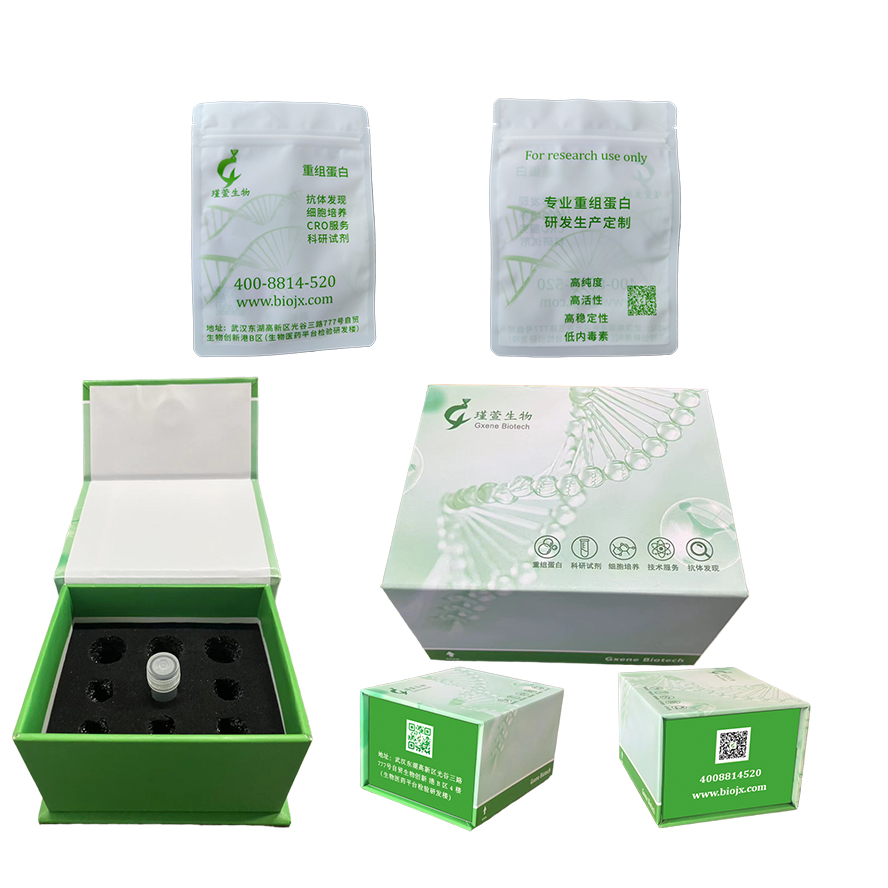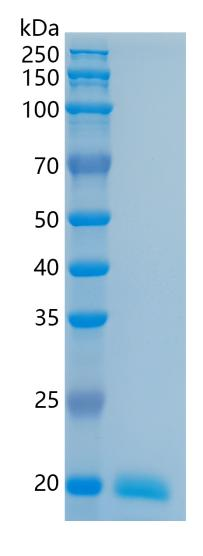



研究方向
IFN-lambda 2 (IL-28A) 是 III 型干扰素家族的成员。人 IFN-lambda 2 与小鼠 IFN-lambda 2 有 65.1% 的共同氨基酸同一性。IFN-lambda 2 特别是在病毒或细菌感染后由树突状细胞 (DC) 产生。
IFN-lambda 2 通过包含 IFNλ 受体 1 (IFNLR1) 和 IL-10 受体亚基-β (IL-10RB) 的异二聚体受体复合物介导作用。当与受体复合物结合时,Jak1和Tyk2将被激活,并导致IFN-λR1(胞内结构域,Tyr406和Tyr343,Tyr517)的酪氨酸磷酸化,并激活STAT1和STAT2。激活的 STAT1 和 STAT2 与 IRF-9 (p48) 一起形成三聚体转录因子复合物 (ISGF3)。形成的 ISGF3 复合物随后易位至细胞核并促进 IFN 刺激基因 (ISG) 的产生,例如 IRF7、MX1 和 OAS1。
IFN-lambda 2 具有抗病毒、抗肿瘤和免疫调节活性。据报道,IFN-lambda 2 可调节 CD11c+ DC 细胞功能并促进 Th1 分化,从而抑制过敏性气道疾病。
Measured in an anti-viral assay using HepG2 human hepatocellular carcinoma cells infected with encephalomyocarditis (EMC) virus. The ED50 for this effect is 5-30 ng/mL.
IL 28A (Interferon-lambda 2; IFN-lambda 2), IL-28B/IFN-lambda 3, and IL-29/IFN-lambda 1 are type III interferons which are distantly related to IL-10 family and type I IFN family cytokines . IL 28A ,interleukin 28B (IL28B), and interleukin 29 (IL29) are three closely related cytokine which are expression can be induced by viral infection.In the liver, the IL-28A induced Th1 cytokine response contributes to inflammation in T cell mediated hepatitis. IL-28A additionally exhibits anti-tumor activity, in part by enhancing IL-12 dependent anti-tumor CTL responses in vivo . In contrast, it is up-regulated in invasive bladder cancer where it promotes tumor cell migration.